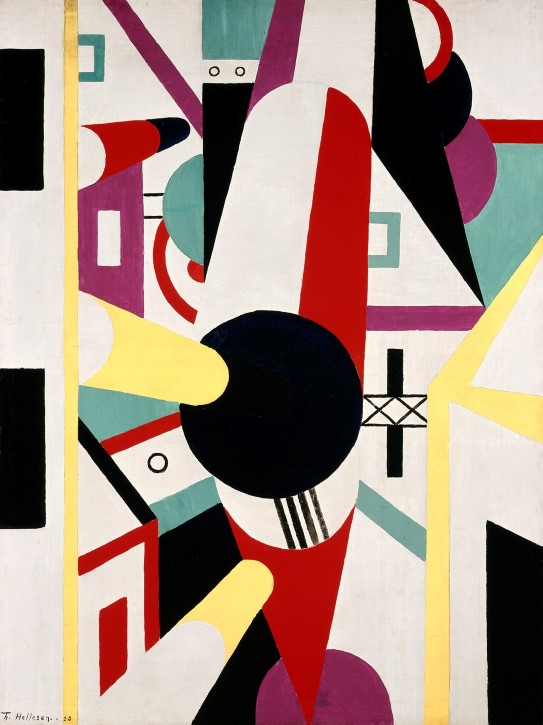Composition
Thorvald Hellesen
Transcription
Narrator:
Thorvald Hellesen attracted attention early in his career, at the start of the 20th century. With his Edvard Munch-inspired works, he was predicted to become a brilliant figure in Norwegian art. But this would change.
Hellesen moved to Paris and married the artist Hélène Perdriat. Both were members of the avant-garde of the period, the pioneers of modern art. In Paris, Hellesen became close friends with the Cubist Fernand Léger.
They were living in an age of global renewal. After the horrors of the First World War, humanity was once again moving full speed ahead. Futurism and Cubism were established art movements in Europe’s major cities, but was Norway ready for the international Modernism that Hellesen now represented? It turned out that it wasn’t. In 1919, Hellesen had his first and only solo exhibition in Kristiania (now Oslo). The reviews were terrible.
Back in Paris, Hellesen continued to develop his Cubist style throughout the nineteen-twenties, inspired by his friend Fernand Legér. His 1920 painting Composition celebrates the city, machinery, and modern life.
In 1937, he suddenly became very unwell and returned home to Norway, where he spent the final months of his life. By then, after so many years in Paris, there was almost no one in Norway that knew who he was. Hellesen died in 1937 at the age of 49. He was soon forgotten, and traces of his artistic activity disappeared.
It was only 50 years after his death that Hellesen started to be promoted by French and Norwegian art historians. Today, he is considered one of Norway’s great Modernist artists.